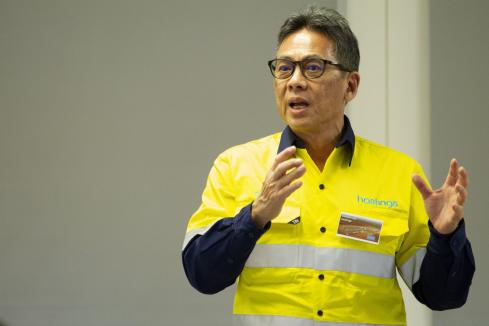It’s not easy to feel sympathy for Perth’s super-rich as they watch their fortunes shrink, but the problems of Gina Rinehart, Andrew Forrest, Kerry Stokes, Angela Bennett and Stan Perron are a powerful pointer to the problems facing everyone in Western Australia.


It’s not easy to feel sympathy for Perth’s super-rich as they watch their fortunes shrink, but the problems of Gina Rinehart, Andrew Forrest, Kerry Stokes, Angela Bennett and Stan Perron are a powerful pointer to the problems facing everyone in Western Australia.
Falling commodity prices are the cause of the billions of dollars wiped from the net worth of the very rich, but whatever pain they might be feeling (if any) is modest compared with the hurt suffered by a simple wage earner who has just lost his job.
The super-rich only have to contend with missing billions, which means they’re down to their last few billions.
The wage earner has lost his income and is now worried about how to feed his family and service his debts. The plight of the Forrest and Rinehart families is far from his mind, though perhaps not today given the burst of national publicity about falling fortunes.
According to the Australian Financial Review, which is also responsible for the BRW Rich List, Mr Forrest has seen his wealth drop to ‘just’ $2.8 billion after shedding $3.39 billion since shares in his Fortescue Metals Group peaked in February.
Mr Stokes is said to be $715.2 million poorer today than when Seven Group shares were at their high, with other members of the wealth club suffering falls of a similar magnitude.
Missing from the cash count is Mrs Rinehart, though that’s largely because of the never-ending legal battle with members of her own family over who owns what. She is undoubtedly poorer today than a year ago, and could be poorer again next year – or she could be richer once the Roy Hill mine starts producing, and if she still owns 70 per cent of the low-cost project.
People who like to pry into the private affairs of the wealthy, such as journalists, see following the rich as a sort of sport with wealth rankings equivalent to an AFL table (Rinehart on top today but Forrest slipping to 10th and in danger of not making the finals unless he tries harder).
Members of assorted rich lists tolerate the game and generally only complain when left off, or downgraded. Mr Forrest courageously said this morning: “I didn’t count it on the way up, and I’m not counting now”.
As if.
The only known serious complaint about being included on a rich list was from Phillip Adams, now a late-night ABC radio broadcaster who made a fortune in the early 1980s by selling his advertising agency. He threatened to sue BRW for “flattery” after being included in the original rich list.
Humour aside, and it is a presumption that Mr Adams really was joking when he lodged his complaint, the falling fortunes of WA’s very rich is showing that we are becoming a poorer place.
Sharp commodity price falls, especially for iron ore, have sent prices back to levels last seen five years ago – with the nasty sting in the tail that costs are still much higher than five years ago.
Iron ore is the commodity that underpins much of the wealth of the super-rich, but it is also the commodity that has:
• powered a large portion of the WA government’s budget;
• helped Mr Perron sell Toyota cars, and collect rent from the shopping centres he owns; and
• provided the cash for advertisers to buy time on Mr Stokes’ Seven television network or ads in The West Australian newspaper.
Pressure at the top end of town means the pips are squeaking at the bottom, with a new round of job cuts at the WesTrac business controlled by Mr Stokes being the latest example of trickle-down economics.
The outlook is for continued tough times for everyone, and while the rich might not appreciate being seen as amoebas under a microscope, that is a more useful purpose than being a perpetual member of the cocktail circuit, or floating around the river on a gin palace.
In time, the wealth of WA’s rich and how their collective value relates to the state’s economic performance might even form the basis of a useful academic thesis.
A wealth test of the super-rich would certainly be a way of putting them to work, albeit as part of a theoretical experiment using live (rich) guinea pigs.

















